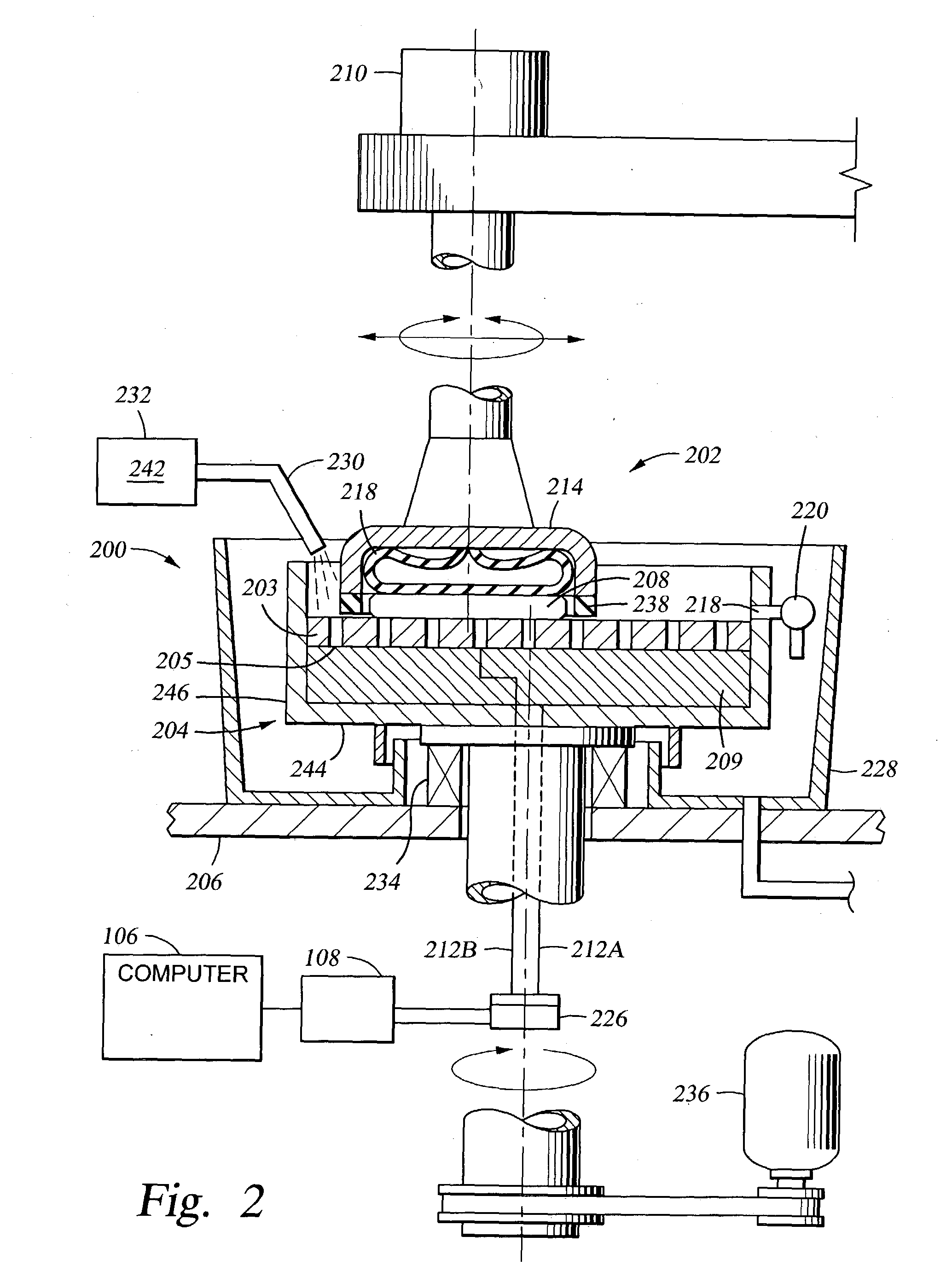Algorithm for real-time process control of electro-polishing
a real-time process and electro-polishing technology, applied in the direction of programme control, lapping machines, instruments, etc., can solve the problems of time-consuming methods, impede the accurate determination of the polishing endpoint, and the progress of the polishing operation is not easily viewabl
- Summary
- Abstract
- Description
- Claims
- Application Information
AI Technical Summary
Benefits of technology
Problems solved by technology
Method used
Image
Examples
example
[0089] A counter-electrode assembly, such as the counter-electrode assembly 209 was divided into five zones: an inner zone, an inner-central zone, a central zone, an outer-central zone and an outer zone (Z1, Z2, Z3, Z4 and Z5) respectively. The zones were arranged in a concentric circular manner similar to the zones depicted for the electrode assembly 209 shown in FIG. 4. Each of the zones was capable of receiving a separate bias with respect to a material layer of a wafer to be polished. One hundred twenty one points, representing a broad sampling of various locations on the material layer were selected. A pre-determined set of instructions (i.e., a polishing program) that encoded a sequence of relative motion between the counter-electrode (as well as the polishing article) and the material layer of a wafer to be processed was provided to a computer (e.g., the computer 106). An algorithm based on the polishing program was used to determine the sequence of relative positions between...
PUM
| Property | Measurement | Unit |
|---|---|---|
| thicknesses | aaaaa | aaaaa |
| electro-chemical activity | aaaaa | aaaaa |
| trajectories | aaaaa | aaaaa |
Abstract
Description
Claims
Application Information
 Login to View More
Login to View More - R&D
- Intellectual Property
- Life Sciences
- Materials
- Tech Scout
- Unparalleled Data Quality
- Higher Quality Content
- 60% Fewer Hallucinations
Browse by: Latest US Patents, China's latest patents, Technical Efficacy Thesaurus, Application Domain, Technology Topic, Popular Technical Reports.
© 2025 PatSnap. All rights reserved.Legal|Privacy policy|Modern Slavery Act Transparency Statement|Sitemap|About US| Contact US: help@patsnap.com



